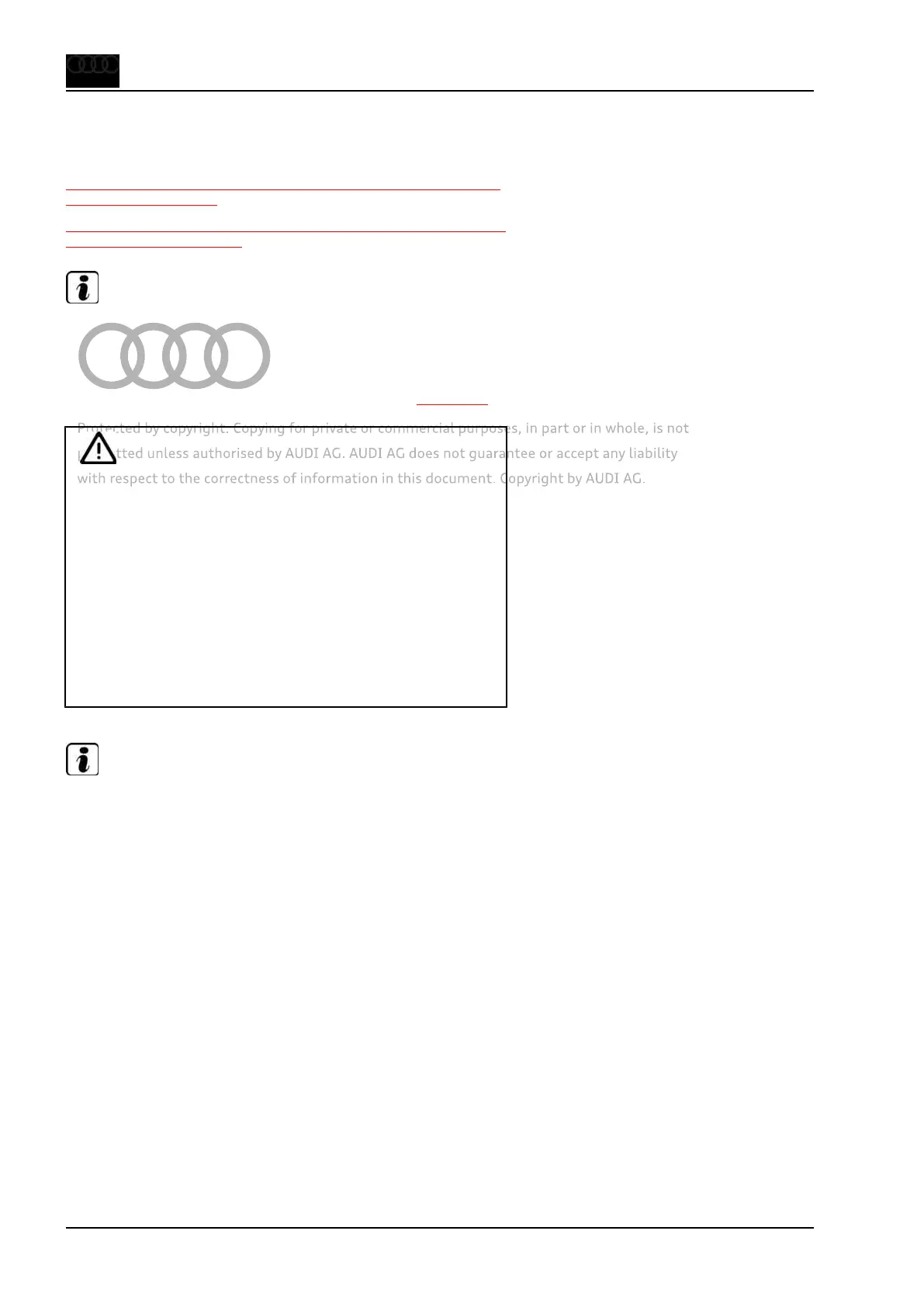8 Bleeding brake system
⇒ “8.1 Bleeding hydraulic system with brake filling and bleeding
equipment”, page 155
⇒ “8.2 Bleeding hydraulic system without brake filling and bleed‐
ing equipment”, page 157
Note
♦
The brake system cannot be completely bled if the older ver‐
sion of the pressure sensor (ACC sensor) (1J0...) is installed.
Replace the pressure sensor for ACC with the new version. ⇒
ETKA
♦
Removing and installing brake pressure sender ⇒ page 54
WARNING
♦ Brake fluid must NOT come into contact with fluids con‐
taining mineral oils (oil, petrol, cleaning agents). Mineral
oils damage the plugs and sleeves in the brake system.
♦ Brake fluid is poisonous and must NOT be drawn off by
sucking through a hose. Because of its caustic properties
it must also not come into contact with paintwork.
♦ Brake fluid is hygroscopic, i.e. it absorbs moisture from the
surrounding air. It must therefore always be stored in air-
tight containers.
♦ Brake fluid flushed out during the bleeding process must
not be re-used and must be disposed of in the proper
manner.
Note
♦
Only use new brake fluid conforming to US standard FMVSS
116 DOT 4.
♦
Genuine VW/Audi brake fluid conforms to this specification.
♦
Do not use liquids containing silicone.
♦
Avoid contamination of brake fluid with any dirt particles or bits
of fluff (e.g. from cleaning cloths etc.).
♦
Rinse off spillages using plenty of water.
♦
When the system is open, do not work with compressed air
and do not move the vehicle.
♦
During the final road test, ensure that at least one ABS-con‐
trolled brake application is performed (pulsations must be felt
at the brake pedal).
♦
The brake system warning lamp flashes if the level of the brake
fluid is too low, in case of a malfunction of the ABS or a mal‐
function of the electronic parking brake.
Audi A6 2005 ➤ , Audi A6 Avant 2005 ➤
Brake system - Edition 04.2019
154 Rep. gr.47 - Brakes - hydraulics

